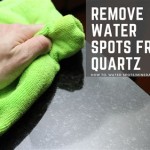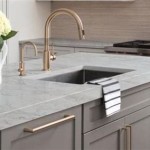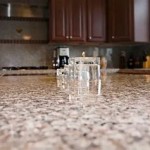Why Is My Countertop Ice Maker Not Working?
Countertop ice makers have become increasingly popular due to their convenience and portability. They offer a readily available supply of ice without the need for plumbing or a dedicated space like larger, built-in ice machines. However, like any appliance, countertop ice makers can experience malfunctions. Troubleshooting the issue can often resolve the problem without requiring professional repair services.
Understanding the common reasons why a countertop ice maker might not be functioning correctly is the first step in diagnosing the issue. Many problems stem from improper usage, lack of maintenance, or simple mechanical failures. A systematic approach to troubleshooting can help pinpoint the cause and identify the necessary corrective actions.
Insufficient Water Supply
One of the most common reasons for a countertop ice maker failing to produce ice is an insufficient water supply. These machines rely on a reservoir, which needs to be adequately filled to initiate the ice-making process. The machine's sensor detects the water level; If the level is below the required threshold, the ice-making cycle will not commence.
The water reservoir must be filled to the marked maximum fill line. Overfilling may also cause issues, potentially damaging the machine or preventing the sensor from accurately detecting the water level. If the reservoir is filled appropriately, inspect the float mechanism or sensor responsible for detecting the water level. A stuck or malfunctioning float can falsely indicate a low water level, even when the reservoir is full. Some models utilize electronic sensors. These sensors can become dirty or faulty over time, requiring cleaning or replacement.
Another potential issue related to the water supply is a blockage in the water line connecting the reservoir to the ice-making tray. Mineral deposits, scale buildup, or small particles can obstruct the flow of water. Regularly cleaning the reservoir and water lines with a solution of vinegar and water can help prevent these blockages. Refer to the manufacturer's instructions for the recommended cleaning procedure.
If the ice maker uses a water filter, a clogged filter can also restrict water flow. Replace the water filter according to the manufacturer's suggested schedule. Even if the ice maker has been used infrequently, the filter can still become clogged due to impurities accumulating in the water. Consider the water quality in the area. Hard water, which contains high levels of minerals, can significantly accelerate the buildup of deposits and scale, leading to blockages and malfunctions.
Finally, ensure that the water being used is of the appropriate quality. While most countertop ice makers can use tap water, distilled or filtered water is often recommended to reduce mineral buildup and improve the clarity and taste of the ice. Check the manufacturer’s specific recommendations for optimal water type.
Mechanical Issues and Component Failure
Beyond water supply problems, several mechanical issues can prevent a countertop ice maker from working. These issues can range from malfunctions in the motor or pump to problems with the ice-making tray or sensors.
The motor that drives the ice-making process is a crucial component. If the motor is faulty or burnt out, the ice maker will not function. Listen for unusual noises or a lack of movement when the ice maker is turned on. A malfunctioning motor often requires replacement. Check for any visible signs of damage to the motor, such as burnt wires or a broken casing. Consult the manufacturer's documentation or a qualified technician to identify the correct replacement motor for the specific ice maker model.
The water pump is responsible for circulating water from the reservoir to the ice-making tray. If the pump is not functioning correctly, the water will not reach the tray, and ice production will cease. Verify that the pump is running by listening for a humming sound or feeling for vibrations. A clogged pump can also prevent water circulation. Disassemble and clean the pump according to the manufacturer's instructions. Pay close attention to any small impellers or moving parts that may be obstructed by debris or mineral deposits.
The ice-making tray itself can also be a source of problems. If the tray is damaged or warped, the ice may not form correctly, or the ice maker may be unable to eject the ice cubes. Inspect the tray for any cracks, dents, or other signs of damage. A damaged tray usually requires replacement. Check the tray's mounting mechanism to ensure that it is properly aligned and securely attached.
Sensors play a critical role in the ice-making process, detecting the water level, ice thickness, and other parameters. If a sensor is faulty, the ice maker may not operate correctly. For example, a sensor that detects ice thickness may prevent the ice maker from ejecting the ice cubes properly, leading to a buildup of ice and eventual malfunction. Use a multimeter to test the sensors for continuity and proper voltage readings. Replace any faulty sensors with the appropriate replacement parts.
Refrigerant leaks can also cause mechanical failure. Countertop ice makers utilize refrigerant to cool the ice-making tray. A refrigerant leak will reduce the cooling capacity of the unit, preventing the formation of ice. Refrigerant leaks require professional attention and are generally not a DIY repair. A qualified technician can identify and repair the leak and recharge the refrigerant.
Environmental Factors and Power Issues
The environment in which the countertop ice maker is operated can significantly affect its performance. Ambient temperature, air circulation, and power supply stability are key factors to consider.
Countertop ice makers are designed to operate within a specific temperature range. If the ambient temperature is too high, the ice maker may struggle to cool effectively, resulting in slow ice production or a complete failure to produce ice. Ensure that the ice maker is placed in a cool, well-ventilated area away from direct sunlight or heat sources. Adequate ventilation is crucial for dissipating heat generated by the compressor. Do not enclose the ice maker in a cabinet or place it too close to other appliances that generate heat.
An unstable power supply can also cause problems. Voltage fluctuations or power surges can damage the ice maker's electronic components, leading to malfunctions. Use a surge protector to protect the ice maker from power surges. Check the power cord for any signs of damage, such as frayed wires or a loose connection. A damaged power cord should be replaced immediately by a qualified electrician.
Ensure that the power outlet is providing the correct voltage. Use a multimeter to test the voltage at the outlet. If the voltage is significantly lower than the required voltage (usually 110-120V in North America), the ice maker may not function properly. Contact an electrician to investigate and correct any electrical issues.
Another environmental factor to consider is air circulation around the ice maker. Blocked vents or obstructed airflow can prevent the unit from properly dissipating heat, leading to overheating and reduced performance. Ensure that the vents on the ice maker are clear of any obstructions, such as dust, debris, or nearby objects. Regularly clean the vents with a vacuum cleaner or soft brush.
Prolonged exposure to humidity can also negatively impact the ice maker's performance. Humidity can cause condensation to form on the internal components, leading to corrosion and electrical shorts. Operate the ice maker in a dry environment and avoid placing it in areas with high humidity, such as bathrooms or laundry rooms. If the ice maker is stored for an extended period, ensure that it is completely dry and stored in a cool, dry place.
Furthermore, consider the altitude at which the ice maker is being used. High altitudes can affect the boiling point of water, potentially impacting the ice-making process. Some ice maker models may have adjustments or settings to compensate for high altitude operation. Refer to the manufacturer's documentation for specific instructions.

Why Is My Countertop Ice Maker Not Working Causes And Fixes Vevor Blog

What S Wrong With My Countertop Portable Ice Maker 10 Common Problems And How To Fix Them

What S Wrong With My Countertop Portable Ice Maker 10 Common Problems And How To Fix Them Youtube

Countertop Ice Maker Repair

How Do You Reset A Portable Ice Maker To Z Guide

How To Fix Ge Profile Opal 2 0 Countertop Ice Maker Not Making Add Water Light Will Go Out

What Is Wrong With My Ice Maker And To Do About It Free Village

What S Wrong With My Countertop Portable Ice Maker 10 Common Problems And How To Fix Them Youtube

Portable Ice Maker Not Making Potential Causes And Fixes Vevor Blog

Frigidaire Countertop Ice Maker Not Working Youtube
See Also








